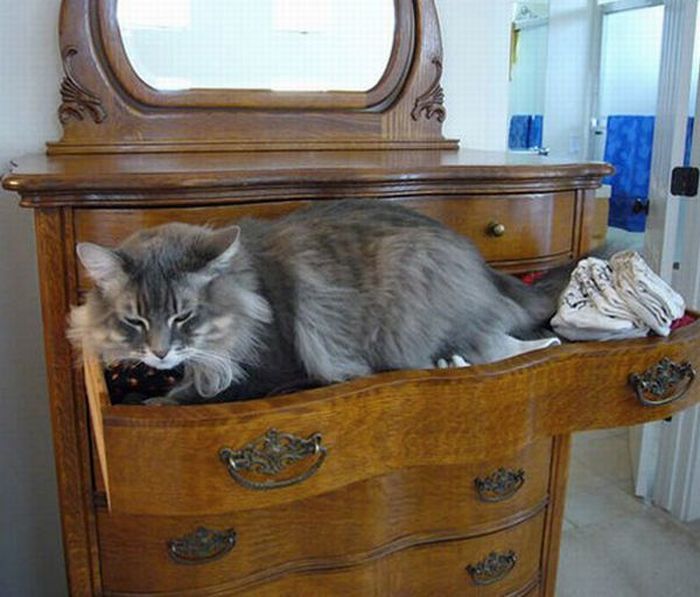|
|
Hiding Cat
|
Most breeds of cat have a noted fondness for settling in high places, or perching. In the wild, a higher place may serve as a concealed site from which to hunt; domestic cats may strike prey by pouncing from such a perch as a tree branch, as does a leopard. Other possible explanations include that height gives the cat a better observation point, allowing it to survey its territory. During a fall from a high place, a cat can reflexively twist its body and right itself using its acute sense of balance and flexibility. This is known as the cat's "righting reflex". It always rights itself in the same way, provided it has the time to do so, during a fall. The height required for this to occur is around 90 cm (3 feet). Cats without a tail also have this ability, since a cat mostly moves its hind legs and relies on conservation of angular momentum to set up for landing, and the tail is in fact little used for this feat. This leads to the proverb "a cat always lands on its feet."
One poorly understood element of cat hunting behavior is the presentation of prey to human owners. Ethologist Paul Leyhausen proposed that cats adopt humans into their social group, and share excess kill with others in the group according to the local pecking order, in which humans are placed at or near the top. However, anthropologist and animal scientist Desmond Morris, in his 1986 book Catwatching, suggests that when cats bring home mice or birds, they are teaching their human to hunt, or helping their human as if feeding "an elderly cat, or an inept kitten". However, this proposal is inconsistent with the fact that male cats also bring home prey, despite males having no involvement with raising kittens.
Domestic cats select food based on its temperature, smell and texture, strongly disliking chilled foods and responding most strongly to moist foods rich in amino acids, which are similar to meat. Cats may reject novel flavors (a response termed neophobia) and learn quickly to avoid foods that have tasted unpleasant in the past. They may also avoid sugary foods and milk; since they are lactose intolerant, these sugars are not easily digested and may cause soft stools or diarrhea. They can also develop odd eating habits. Some cats like to eat or chew on other things, most commonly wool, but also plastic, paper, string, or even coal. This condition is called pica and can threaten their health, depending on the amount and toxicity of the items eaten.
Since cats cannot fully close their mouths to create suction, they use a lapping method with the tongue to draw liquid upwards into their mouths. Lapping at a rate of four times a second, the cat touches the smooth tip of its tongue to the surface of the water, and quickly retracts it, drawing water upwards.
|
|









